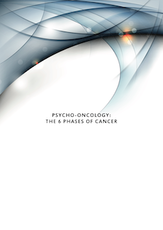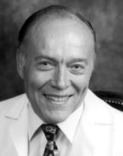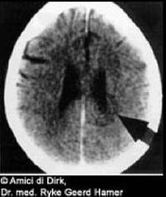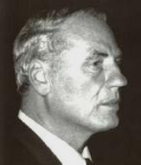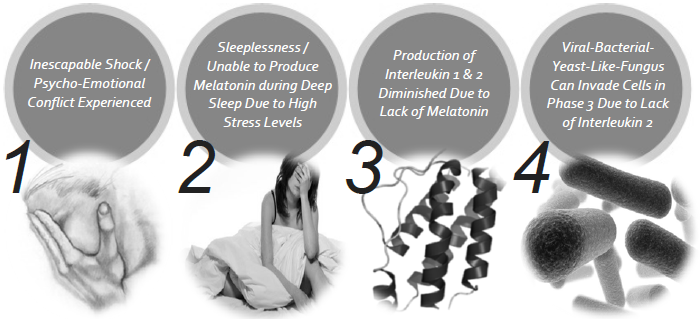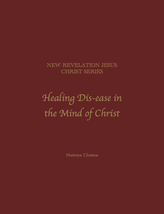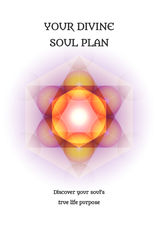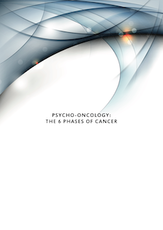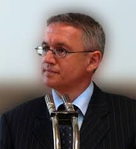Psycho-Oncology: Discover How Stress Causes Cancer
Phase 1 of Cancer: Inescapable Shock
Phase 2 of Cancer: Adrenaline Depletion
Phase 3 of Cancer: The Cancer Fungus
Phase 4 of Cancer: Niacin Deficiency
Phase 5 of Cancer: Vitamin C Depletion
Phase 6 of Cancer: Immune Suppression
Psycho-Oncology: The 6 Phases of Cancer
This 93-page evidence-based thesis reveals exactly how cancer develops in the body over 6 separate phases. It is freely available in pdf format.
INTRODUCTION: THE 6 PHASES OF CANCER
Cancer has long been associated with stress; however within mainstream oncology stress is generally considered of relative low importance as the primary causal factor in the genesis of cancer. Inspired by God, spiritual messenger Glen Russell brings forth new never-before-seen concepts identifying stress as the primary instigator of cancer. This document has been created to help medical staff, researchers and lay folk understand clearly the evidence-based relationship between cancer and stress, and documents the world-wide clinical studies and research under-pinning the 6 Phases of Cancer; as well as key remedies to help reverse each of these six distinct and interrelated phases.
PHASE 1 OF CANCER: INESCAPABLE SHOCK
Phase 1 occurs approximately 18-24 months prior to the diagnosis of cancer. This is where the individual with cancer experiences an "inescapable shock" or acute psycho-emotional trauma, affecting deep sleep and the production of melatonin within the body. Melatonin is the primary hormone responsible for inhibiting cancer cell growth. Produced by the pineal gland during deep sleep, melatonin inhibits cancer cell growth through the on-going production of interleukin 2 (IL-2), which governs white blood cell immune activity and protects against microbial infection. Without enough melatonin due to prolonged chronic stress affecting deep sleep patterns, cancer cells thrive. As discovered by Dr Ryke Geerd Hamer (below) every cancer has a different and very specific psycho-emotional cause; whereby a part of the emotional reflex centre in the brain is damaged as a result of the prolonged psycho-emotional trauma. And as each part of the emotional reflex centre in the brain controls and is connected to a different organ of the body, as this emotion centre breaks down experiencing necrosis, so does the organ it controls leading to cancer.
THE THEORY: BY GLEN RUSSELL,
PUNA WAI ORA MIND-BODY CANCER CLINIC
Over the past decades, a number of licensed medical practitioners working in the field of oncology have discovered cancer is preceded by a specific emotional trauma, occurring approximately 2 years prior to the diagnosis of cancer. Two of these practitioners include Dr W Douglas Brodie, founder of the Reno Integrative Medical Center in Nevada, USA and Dr Ryke Geerd Hamer, a German physician and founder of German New Medicine. Both of these practitioners claim to have examined thousands of cancer patients in reaching this conclusion. More specifically, Dr Ryke Geerd Hamer proposes that each cancer in the body has a different emotional cause which he had identified; in other words the emotional cause for cancer of the left breast is different to that of the right breast and to cancer of the colon, etc. In my own personal experience in treating hundreds of cancer patients to heal the root psycho-emotional cause of their disease, it has been my observation that Dr Ryke Geerd Hamer's theory that each cancer has a different and very specific psycho-emotional cause is 100% accurate. For example, I always find a woman presenting with cancer of the left breast has [in line with Dr Hamer's theory] experienced a psychological and emotional conflict / trauma approximately 2 years prior to the diagnosis of cancer involving the "mother, child or home". Similarly, I always find a woman presenting with uterine cancer has experienced a "sexual conflict" 2 years prior to the diagnosis of cancer, and so on. On a personal level, my own mother [who was diagnosed with cancer of the left breast in 1992] experienced a psycho-emotional trauma 2 years prior in 1990 involving the death of her mother, in line with Dr Hamer's theory. I remember her telling me at the time she felt like a zombie for many months. As is typical with patients I see, my mother had a tendency to over-react to most difficulties in life and was always highly stressed, and it is this hypersensitivity to life's stressors that makes one susceptible to cancer. Dr W Douglas Brodie reveals it is not the stressful event that causes cancer, but our inability to cope with life stress.
The Cancer Personality, by Dr W Douglas Brodie: “In dealing with many thousands of cancer patients over the past 28 years, it has been my observation that there are certain personality traits present in the cancer-susceptible individual. These traits are as follows: 1. Being highly conscientious, caring, dutiful, responsible, hard-working, and usually of above average intelligence. 2. Exhibits a strong tendency toward carrying other people’s burdens and toward taking on extra obligations, and often “worrying for others.” 3. Having a deep-seated need to make others happy. Being a “people pleaser” with a great need for approval. 4. Often lacking closeness with one or both parents, which sometimes, later in life, results in lack of closeness with spouse or others who would normally be close. 5. Harbours long-suppressed toxic emotions, such as anger, resentment and / or hostility. The cancer-susceptible individual typically internalizes such emotions and has great difficulty expressing them. 6. Reacts adversely to stress, and often becomes unable to cope adequately with such stress. Usually experiences an especially damaging event about 2 years before the onset of detectable cancer. The patient is not able to cope with this traumatic event or series of events, which comes as a “last straw” on top of years of suppressed reactions to stress. 7. Has an inability to resolve deep-seated emotional problems/conflicts, usually beginning in childhood, often even being unaware of their presence. Typical of the cancer-susceptible personality, as noted above, is the long-standing tendency to suppress “toxic emotions”, particularly anger. Usually beginning in childhood, this individual has held in their hostility and other unacceptable emotions. More often than not, this feature of the affected personality has its origins in feelings of rejection by one or both parents. Whether these feelings of rejection are justified or not, the individual perceives this rejection as real, and this results in a lack of closeness with the “rejecting” parent, followed later in life by a lack of closeness with spouses and others with whom close relationships would normally develop. Those at the higher risk for cancer tend to develop feelings of loneliness as a result of their having been deprived of affection and acceptance earlier in life, even if this is only their perception. They have a tremendous need for approval and acceptance, and develop a very high sensitivity to the needs of others while suppressing their own emotional needs.
They become the "caretakers" of the world, showing great compassion and caring for others, and will go out of their way to look after others. They are very reluctant to accept help from others, fearing that it may jeopardize their role as the caretaker. Throughout their childhood they have been typically taught "not to be selfish", and they take this to heart as a major lifetime objective. All of this is highly commendable in our culture, but must be somehow modified in the case of the cancer patient. A distinction needs to be made here between the "care-giving" and the "care-taking" personality. There is nothing wrong with care-giving, of course, but the problem arises when the susceptible individual derives their entire worth, value and identity from their role as "caretaker". If this very important shift cannot be made, the patient is stuck in this role, and the susceptibility to cancer greatly increases. As already stated, a consistent feature of those who are susceptible to cancer appears to be that they "suffer in silence", and bear their burdens without complaint. These burdens of their own as well as the burdens of others weigh heavily upon these people through a lifetime of emotional suppression. The carefree extrovert, on the other hand, seems to be far less vulnerable to cancer than the caring introvert described above. How one reacts to stress appears to be a major factor in the larger number of contributing causes of cancer. Most cancer patients have experienced a highly stressful event, usually about 2 years prior to the onset of detectable disease. This traumatic event is often beyond the patient's control, such as the loss of a loved one, loss of a business, job, home, or some other major disaster. The typical cancer personality has lost the ability to cope with these extreme events, because his/her coping mechanism lies in his/her ability to control the environment. When this control is lost, the patient has no other way to cope. Major stress causes suppression on the immune system, and does so more overwhelmingly in the cancer-susceptible individual than in others. Thus personal tragedies and excessive levels of stress appear to combine with the underlying personality described above to bring on the immune deficiency which allows cancer to thrive."
Dr Ryke Geerd Hamer discovered a connection between cancer and unresolved psychological / emotional conflict through first-hand experience. His son was murdered and soon after he developed testicular cancer, which he identifies as the result of a "loss conflict". From this experience, and as chief of internal medicine in a gynecology-oncology clinic at Munich University, he was able to interview and examine the records of thousands of cancer patients. His research led him to identify the presence of concentric rings in the emotional reflex centre of the brain as being evidence of the psycho-emotional trauma on the brain itself, which he called "Hamer Herds". He proposes the location of the Hamer Herd (HH) on the brain which is seen through a CT scan, is like a map, which to the trained practitioner can reveal the precise disease and its organ-location in the body. Dr Hamer offers images such as the one below, as evidence of these concentric rings or Hamer Herds.
They become the "caretakers" of the world, showing great compassion and caring for others, and will go out of their way to look after others. They are very reluctant to accept help from others, fearing that it may jeopardize their role as the caretaker. Throughout their childhood they have been typically taught "not to be selfish", and they take this to heart as a major lifetime objective. All of this is highly commendable in our culture, but must be somehow modified in the case of the cancer patient. A distinction needs to be made here between the "care-giving" and the "care-taking" personality. There is nothing wrong with care-giving, of course, but the problem arises when the susceptible individual derives their entire worth, value and identity from their role as "caretaker". If this very important shift cannot be made, the patient is stuck in this role, and the susceptibility to cancer greatly increases. As already stated, a consistent feature of those who are susceptible to cancer appears to be that they "suffer in silence", and bear their burdens without complaint. These burdens of their own as well as the burdens of others weigh heavily upon these people through a lifetime of emotional suppression. The carefree extrovert, on the other hand, seems to be far less vulnerable to cancer than the caring introvert described above. How one reacts to stress appears to be a major factor in the larger number of contributing causes of cancer. Most cancer patients have experienced a highly stressful event, usually about 2 years prior to the onset of detectable disease. This traumatic event is often beyond the patient's control, such as the loss of a loved one, loss of a business, job, home, or some other major disaster. The typical cancer personality has lost the ability to cope with these extreme events, because his/her coping mechanism lies in his/her ability to control the environment. When this control is lost, the patient has no other way to cope. Major stress causes suppression on the immune system, and does so more overwhelmingly in the cancer-susceptible individual than in others. Thus personal tragedies and excessive levels of stress appear to combine with the underlying personality described above to bring on the immune deficiency which allows cancer to thrive."
Dr Ryke Geerd Hamer discovered a connection between cancer and unresolved psychological / emotional conflict through first-hand experience. His son was murdered and soon after he developed testicular cancer, which he identifies as the result of a "loss conflict". From this experience, and as chief of internal medicine in a gynecology-oncology clinic at Munich University, he was able to interview and examine the records of thousands of cancer patients. His research led him to identify the presence of concentric rings in the emotional reflex centre of the brain as being evidence of the psycho-emotional trauma on the brain itself, which he called "Hamer Herds". He proposes the location of the Hamer Herd (HH) on the brain which is seen through a CT scan, is like a map, which to the trained practitioner can reveal the precise disease and its organ-location in the body. Dr Hamer offers images such as the one below, as evidence of these concentric rings or Hamer Herds.
Dr Ryke Geerd Hamer: "Every cancer or cancer-like disease originates with a very difficult highly acute, dramatic and isolating shock. The experience of shock is simultaneous or virtually simultaneous on three levels: 1. the psyche 2. the brain 3. the organ. The development of the conflict determines a specific development of the HH (Hamer Herd) in the brain and of the cancer or cancer-equivalent disease in the organ. There are very specific signs which clearly distinguish the ordinary conflicts and problems in our daily lives. From the very first moment of a DHS (psycho-emotional trauma), you would experience continuous stress on the sympathetic nervous system. The symptoms would include cold hands and/or feet, loss of appetite, weight loss, sleeplessness and dwelling day and night on the conflict content. This situation will only change when the conflict has been resolved. In contrast to normal everyday problems, we see the patient falling into a lasting stress phase that will cause specific symptoms and a growing cancer. The HH (Hamer Herd) in the brain, which is immediately visible, shows that the patient's psyche has very precise, defined symptoms that cannot be overlooked. I discovered the ontogenetic system of tumors and cancer-equivalents after observing about 10,000 cases. I worked absolutely empirically, like a good scientist should. I documented all the collected cases and the CT scans of the brain with their histological findings. Only after I had put them all together and compared them did I see that there was a system.
I didn't really occupy myself with this until 1978. I was a doctor of internal medicine and had worked in university clinics for fifteen years, five of them as a professor. Then a terrible thing happened: while asleep on a boat, my son Dirk was shot, for no reason, by a madman, an Italian prince. This was a terrible shock for me, sudden and unexpected, and I was powerless to react. Every day events or conflicts don't usually catch us so "off guard". We generally have a chance to anticipate the normal conflicts that we face in life, but the conflicts we are unable to prepare for and which cause this helplessness and inability to react, create, in essence, a panic shock. We call these biological conflicts. In 1978 I developed testicular cancer from such a biological conflict, a so-called "loss conflict". Since I had never been seriously ill, I wondered if my condition had anything to do with the death of my son. Three years later, as chief of internal medicine in a gynecology-oncology clinic at Munich University, I had the opportunity to study female patients with cancer and to compare my findings to see if their mechanism was the same as mine; if they too had experienced such a terrible shock. I found that all of them, without exception, had experienced the same type of biological conflict as I had. They were able to recollect the shock, the resulting sleeplessness, weight loss, cold hands and the beginning of tumor growth. There is at present a movement to divide medicine into organic medicine and psychological medicine, or psychotherapy. When a doctor states that there is no organic cause, he is giving the psychotherapist a free hand to treat these 'clean' psychological diseases. Such division is absurd in the eyes of a practitioner of the German New Medicine, because illness cannot be divided and parcelled out. The psyche, brain and organ are three levels of the same organism and the course of events on them is always synchronous."
I didn't really occupy myself with this until 1978. I was a doctor of internal medicine and had worked in university clinics for fifteen years, five of them as a professor. Then a terrible thing happened: while asleep on a boat, my son Dirk was shot, for no reason, by a madman, an Italian prince. This was a terrible shock for me, sudden and unexpected, and I was powerless to react. Every day events or conflicts don't usually catch us so "off guard". We generally have a chance to anticipate the normal conflicts that we face in life, but the conflicts we are unable to prepare for and which cause this helplessness and inability to react, create, in essence, a panic shock. We call these biological conflicts. In 1978 I developed testicular cancer from such a biological conflict, a so-called "loss conflict". Since I had never been seriously ill, I wondered if my condition had anything to do with the death of my son. Three years later, as chief of internal medicine in a gynecology-oncology clinic at Munich University, I had the opportunity to study female patients with cancer and to compare my findings to see if their mechanism was the same as mine; if they too had experienced such a terrible shock. I found that all of them, without exception, had experienced the same type of biological conflict as I had. They were able to recollect the shock, the resulting sleeplessness, weight loss, cold hands and the beginning of tumor growth. There is at present a movement to divide medicine into organic medicine and psychological medicine, or psychotherapy. When a doctor states that there is no organic cause, he is giving the psychotherapist a free hand to treat these 'clean' psychological diseases. Such division is absurd in the eyes of a practitioner of the German New Medicine, because illness cannot be divided and parcelled out. The psyche, brain and organ are three levels of the same organism and the course of events on them is always synchronous."
Dr Ryke Geerd Hamer proposes a person who experiences the onset of detectable cancer has experienced a "biological conflict" or inescapable shock that causes subsequent organ-necrosis and tumour cell growth. And this has been validated in research conducted by Madelon Visintainer, now Associate Professor at Yale University School of Medicine, where rats receiving mild inescapable shock had a significantly higher rate of tumour progression. In my own experience of treating hundreds of cancer patients, this biological conflict or inescapable shock serves as the "trigger event" for cancer to develop within the body. The cancer-susceptible personality is already highly stressed prior to this trigger event, which is like the straw that breaks the camel's back, destabilizing the body's natural homeostasis and causing cancer. What I also found was the trigger event has a common psycho-emotional theme with previously unresolved conflicts the cancer patient has experienced earlier on in their life, commonly during childhood, as well as during past lives. In one notable case, cancer patient Dr Suzanne Friedman of San Francisco USA [who has given permission for her experience to be shared] presented with stage IV inoperable lung cancer, having been given 7 months to live. According to Dr Hamer the psycho-emotional cause for lung cancer is "fear of dying or suffocation, including fear for someone else". In line with Dr Hamer's theory, Dr Friedman experienced a relationship trauma 2 years prior to the onset of detectable cancer where the psycho-emotional conflict she could not resolve was feeling suffocated. Using regression therapy, the cancer present within Dr Friedman's lungs led us to earlier experiences in her childhood where she felt suffocated and to a past-life where [as a mother of two young children] she was gassed in a concentration camp in Nazi Germany, experiencing fear of death and suffocation. It was this past-life unresolved event that was the most highly charged, being more stressful than the trigger event itself. And this is not uncommon in cancer patients I see, that the trigger event is less emotionally charged than previously unresolved conflicts. All psycho-emotional conflicts were resolved in this case and Dr Friedman became cancer-free within weeks. As is common with cancer patients I see, the trigger event presents to help the patient resolve previously unresolved conflicts involving the same psycho-emotional theme. Below is a list of conflicts Dr Ryke Geerd Hamer proposes serves as the trigger event and cause for each different type of cancer in the body:
ADRENAL CORTEX: Wrong Direction. Gone Astray
BLADDER: Ugly Conflict. Dirty Tricks
BONE: Lack of Self Worth. Inferiority Feeling
BRAIN TUMOR: Stubbornness. Refusing to Change Old Patterns. Mental Frustration
[The above is Louise Hay's proposed cause for brain cancer.]
BREAST MILK GLAND: Involving Care or Disharmony
BREAST MILK DUCT: Separation Conflict
BREAST LEFT: Conflict concerning Child, Home or Mother
BREAST RIGHT: Conflict with Partner or Others
BRONCHIOLES: Territorial Conflict
CERVIX: Severe Frustration
COLON: Ugly Indigestible Conflict
ESOPHAGUS: Cannot Have It or Swallow It
GALL BLADDER: Rivalry Conflict
HEART: Perpetual Conflict
INTESTINES: Indigestible Chunk of Anger
KIDNEYS: Not wanting to Live. Water or Fluid Conflict
LARYNX: Conflict of Fear and Fright
LIVER: Fear of Starvation
LUNGS: Fear of Dying or Suffocation, including Fear for Someone Else
LYMPH GLANDS: Loss of Self-Worth
[LYMPHOMA {Louise Hay proposed cause}: Blame and a tremendous fear of not being good enough. A frantic race to prove one's self until the blood has no substance left to support itself. The joy of life is forgotten in the race for acceptance.]
MELANOMA: Feeling Dirty, Soiled, Defiled
MIDDLE EAR: Not being able to get some Vital Information
MOUTH: Cannot Chew It or Hold It
PANCREAS: Anxiety-Anger Conflict with Family Members. Inheritance
PROSTATE: Ugly Conflict with Sexual Connotations
RECTUM: Fear of Being Useless
SKIN: Loss of Integrity
SPLEEN: Shock of being Physically/Emotionally Wounded
STOMACH: Indigestible Anger. Swallowed Too Much
TESTES/OVARIES: Loss Conflict
THYROID: Feeling Powerless
TUMOR: Nursing Old Hurts and Shocks. Building Remorse
[The above is Louise Hay's proposed cause for tumor.]
UTERUS: Sexual Conflict
ADRENAL CORTEX: Wrong Direction. Gone Astray
BLADDER: Ugly Conflict. Dirty Tricks
BONE: Lack of Self Worth. Inferiority Feeling
BRAIN TUMOR: Stubbornness. Refusing to Change Old Patterns. Mental Frustration
[The above is Louise Hay's proposed cause for brain cancer.]
BREAST MILK GLAND: Involving Care or Disharmony
BREAST MILK DUCT: Separation Conflict
BREAST LEFT: Conflict concerning Child, Home or Mother
BREAST RIGHT: Conflict with Partner or Others
BRONCHIOLES: Territorial Conflict
CERVIX: Severe Frustration
COLON: Ugly Indigestible Conflict
ESOPHAGUS: Cannot Have It or Swallow It
GALL BLADDER: Rivalry Conflict
HEART: Perpetual Conflict
INTESTINES: Indigestible Chunk of Anger
KIDNEYS: Not wanting to Live. Water or Fluid Conflict
LARYNX: Conflict of Fear and Fright
LIVER: Fear of Starvation
LUNGS: Fear of Dying or Suffocation, including Fear for Someone Else
LYMPH GLANDS: Loss of Self-Worth
[LYMPHOMA {Louise Hay proposed cause}: Blame and a tremendous fear of not being good enough. A frantic race to prove one's self until the blood has no substance left to support itself. The joy of life is forgotten in the race for acceptance.]
MELANOMA: Feeling Dirty, Soiled, Defiled
MIDDLE EAR: Not being able to get some Vital Information
MOUTH: Cannot Chew It or Hold It
PANCREAS: Anxiety-Anger Conflict with Family Members. Inheritance
PROSTATE: Ugly Conflict with Sexual Connotations
RECTUM: Fear of Being Useless
SKIN: Loss of Integrity
SPLEEN: Shock of being Physically/Emotionally Wounded
STOMACH: Indigestible Anger. Swallowed Too Much
TESTES/OVARIES: Loss Conflict
THYROID: Feeling Powerless
TUMOR: Nursing Old Hurts and Shocks. Building Remorse
[The above is Louise Hay's proposed cause for tumor.]
UTERUS: Sexual Conflict
Studies below show a correlation between extreme suppression of emotions (primarily anger) and a highly stressful life event preceding the onset and development of cancer.
1. Extreme suppression of anger was the most commonly identified characteristic of 160 breast cancer patients who were given a detailed psychological interview and self-administered questionnaire in a study conducted by the King's College Hospital in London, as reported by the Journal of Psychosomatic Research. "Patients results are based on statistical comparisons between 69 patients found at operation to have breast cancer and a control group comprising the remaining 91 patients with benign breast disease. Our principle finding was a significant association between the diagnosis of breast cancer and a behaviour pattern, persisting throughout adult life, of abnormal release of emotions. This abnormality was, in most cases, extreme suppression of anger and, in patients over 40, extreme suppression of other feelings." [http://www.sciencedirect.com/science/article/pii/0022399975900628]
2. In a study conducted over 4.5 years by the Cancer Centre of the Greek Social Security Department in Athens, researchers found a traumatic life event typically preceded the onset of cancer. “The authors present their results as far as psychological stress influences the development of cancer of the breast in 813 patients (Group A) and in 685 women who did not have cancer of the breast (Group B). They were able to show that Group A had a positive correlation which was statistically very significant with the following parameters: the death of a much-loved person; the negative behaviour of the husband; an unexpected change in life style; continual conflicts in the family; financial problems; unsatisfactory sex life; consultations with a psychiatrist and allergy. The authors conclude that they believe that it is useful to look at all the factors that are known as risks for cancer of the breast, including the influence of psycho-traumatic factors.” [http://www.ncbi.nlm.nih.gov/pubmed/3819354]
3. The University of Helsinki, Finland conducted a study of 10,808 women to discover whether stressful life events preceded the onset of cancer. “Independently of total life events, – divorce/separation, death of a husband, and death of a close relative or friend were all associated with increased risk of breast cancer. The findings suggest a role for life events in breast cancer etiology through hormonal or other mechanisms.” [http://www.ncbi.nlm.nih.gov/pubmed/12615606]
4. Madelon Visintainer, now Associate Professor at Yale University School of Medicine, found rats receiving mild shock they could not escape from had a significantly higher rate of tumour progression. "Rats experienced inescapable, escapable, or no electric shock 1 day after being implanted with a Walker 256 tumor preparation. Only 27 percept of the rats receiving inescapable shock rejected the tumor, whereas 63 percent of the rats receiving escapable shock and 54 percent of the rats receiving no shock rejected the tumor. These results imply that lack of control over stressors reduces tumor rejection and decreases survival." [http://www.ncbi.nlm.nih.gov/pubmed/7200261]
5. Retired Clinical Professor of Surgery at Yale Medical School, Dr Bernie Siegel: "I have collected 57 extremely well documented so-called cancer miracles. At a certain particular moment in time they decided that the anger and the depression were probably not the best way to go, since they had such little time left. And so they went from being that to being loving, caring, no longer angry, no longer depressed, and able to talk to the people they loved. These 57 people had the same pattern. They gave up, totally, their anger, and they gave up, totally, their depression, by specifically a decision to do so. And at that point the tumors started to shrink." [http://berniesiegelmd.com/]
Studies below show expressing and releasing toxic negative emotions (such as anger, hate, resentment, grief) increases the survival rates of cancer patients significantly.
1. The Ontario Cancer Institute conducted a ground-breaking study to evaluate the effects of psychological self-help work, principally the expression of negative emotions, on the survival time of 22 medically incurable metastatic cancer patients. With an expected 1 year survival rate, median survival was 2.25 times that predicted by the oncology panel, with an incredible 6 of the 22 patients still alive after five years. "Twenty-two patients with medically incurable metastatic cancer of various kinds received weekly group psycho-therapy for up to 1 year, the great majority remaining well enough to attend the group for at least 8 months. The intervention had three components. The first was support: patients were comforted and strengthened by the group in the face of life-threatening disease. Expression and clarification of feelings was encouraged, as was rational problem solving, frank communication with important others, monitoring and changing of cognitions and the daily application of coping skills. Patients were helped to become, as Spiegel (1986) put it, 'experts in living'. Fear of death and dying was openly discussed and group members who died were grieved for. The second aspect of the intervention was homework: there was an emphasis on taking responsibility, not for one's cancer or its outcome, but for the implementation of a personal programme of self-help. Patients were asked to practice coping skills, such as relaxation and meditation, and to completed 20 weekly sessions of written homework, which included questions and assignments over a wide range of psychological and spiritual / existential issues (examples: What makes me feel I really want to live? Which people are important in my life, and how much support do I feel each of them gives me? Draw a picture of an important aspect of your life at the following (specified) stages. Attend at least one community spiritual or religious meeting and write about how it affected you). The third facet of the intervention was group psychotherapy: patients' entrenched opinions and habit patterns were explored and modifications suggested; e.g. common issues included guilt, denial, blaming physicians and others, exaggerated dependencies, feelings of helplessness and a perceived loss of entitlement to longer life. Median survival of the 22 subjects was 2.25 times that predicted by the oncology panel (with six subjects still alive at the time of writing)." [http//:www.healingjourney.ca/article.html]
2. The California Department of Health Services in association with the National Cancer Institute studied 847 women with breast cancer from 1985-1994 and found those who reported low levels of emotional expression had a fourfold risk of dying from cancer than those who reported high levels of emotional expression. Study findings: "The survival analysis was conducted with a sample of 847 women, 442 (52.2 percent) of whom were Black and 405 (47.8 percent) of whom were White. Expression of emotion was related to better survival (hazard ratio (HR) = 0.6; 95 percent confidence interval (CI): 0.4, 0.9), and suppression of emotion was associated with worse survival (HR = 1.4; 95 percent CI: 1.1, 1.9). Patients had a nearly fourfold risk of dying from breast cancer if they reported low levels of both emotional expression and emotional support when compared with patients with early stage tumors who reported high levels of both. These results suggest that the opportunity for emotional expression may help improve survival among patients with invasive breast cancer." [http//aje.oxfordjournals.org/content/152/10/940.full]
3. The California Breast Cancer Research Program conducted a follow-up study of Dr. David Spiegel's 1989 study and found the survival rate of women in his group therapy program who openly expressed their anger was doubled (3.7 years), compared to the women in his group therapy program who constrained their anger (1.8 years), with 6 of the 50 women who openly expressed their anger still living at 7 years post-entry study. Study findings: "In our preliminary results (H = 28 with 69 tape-by-woman segments in the data set), long moments of indirect or constrained anger during the first few months of group therapy strongly predicted an earlier death (p < .01). By 3 years from study entry, all but 2 women with more constrained anger have died--compared with 6 women, who express no constrained anger or only express short moments of it, still living at 7 years post-study entry. The mean survival time was, thus, doubled for women who do not constrain anger (3.7 years compared with 1.8). This is the first behavioural study in a relatively naturalistic setting which links bottling up anger with shorter survival." [See study]
4. The UCLA School of Medicine found psychological intervention significantly increased cancer survival rates in malignant melanoma patients. Six years after the study, only 3 of the 34 patients given psychological intervention had died, compared to 10 of 34 patients in the control group not given psychological intervention. Study findings: "We evaluated recurrence and survival for 68 patients with malignant melanoma who participated in a 6-week structured psychiatric group intervention 5 to 6 years earlier, shortly after their diagnosis and initial surgical treatment. For control patients, there was a trend for recurrence (13/34) and a statistically significant greater rate of death (10/34) than for experimental patients (7/34 and 3/34, respectively)." [http://www.ncbi.nlm.gov/pubmed/8357293?dopt=Abstract]
5. The University of Rochester and Harvard School of Public Health followed 729 individuals over 12 years and found a 70% increase in cancer deaths for those who were scored at above the 75% level of suppressing emotions. "Emotion suppression at the 75th vs. 25th percentile conveyed a significant elevation in risk (HR = 1.35, or a 35% increase) of death from any cause. This was comparable to the increase in mortality risk observed for 3.1 years of life expectancy. The same difference in suppression was associated with a 70% increase in risk (HR = 1.70) of death from cancer (a 5.6 year difference in life expectancy). Our analysis of a US nationally representative sample, followed for 12 years for mortality by cause of death, revealed significant associations between higher levels of emotion suppression and all-cause as well as cancer-related mortality." [http://www.ncbi.nlm.nih.gov/pmc/articles/PMC3939772/]
1. Extreme suppression of anger was the most commonly identified characteristic of 160 breast cancer patients who were given a detailed psychological interview and self-administered questionnaire in a study conducted by the King's College Hospital in London, as reported by the Journal of Psychosomatic Research. "Patients results are based on statistical comparisons between 69 patients found at operation to have breast cancer and a control group comprising the remaining 91 patients with benign breast disease. Our principle finding was a significant association between the diagnosis of breast cancer and a behaviour pattern, persisting throughout adult life, of abnormal release of emotions. This abnormality was, in most cases, extreme suppression of anger and, in patients over 40, extreme suppression of other feelings." [http://www.sciencedirect.com/science/article/pii/0022399975900628]
2. In a study conducted over 4.5 years by the Cancer Centre of the Greek Social Security Department in Athens, researchers found a traumatic life event typically preceded the onset of cancer. “The authors present their results as far as psychological stress influences the development of cancer of the breast in 813 patients (Group A) and in 685 women who did not have cancer of the breast (Group B). They were able to show that Group A had a positive correlation which was statistically very significant with the following parameters: the death of a much-loved person; the negative behaviour of the husband; an unexpected change in life style; continual conflicts in the family; financial problems; unsatisfactory sex life; consultations with a psychiatrist and allergy. The authors conclude that they believe that it is useful to look at all the factors that are known as risks for cancer of the breast, including the influence of psycho-traumatic factors.” [http://www.ncbi.nlm.nih.gov/pubmed/3819354]
3. The University of Helsinki, Finland conducted a study of 10,808 women to discover whether stressful life events preceded the onset of cancer. “Independently of total life events, – divorce/separation, death of a husband, and death of a close relative or friend were all associated with increased risk of breast cancer. The findings suggest a role for life events in breast cancer etiology through hormonal or other mechanisms.” [http://www.ncbi.nlm.nih.gov/pubmed/12615606]
4. Madelon Visintainer, now Associate Professor at Yale University School of Medicine, found rats receiving mild shock they could not escape from had a significantly higher rate of tumour progression. "Rats experienced inescapable, escapable, or no electric shock 1 day after being implanted with a Walker 256 tumor preparation. Only 27 percept of the rats receiving inescapable shock rejected the tumor, whereas 63 percent of the rats receiving escapable shock and 54 percent of the rats receiving no shock rejected the tumor. These results imply that lack of control over stressors reduces tumor rejection and decreases survival." [http://www.ncbi.nlm.nih.gov/pubmed/7200261]
5. Retired Clinical Professor of Surgery at Yale Medical School, Dr Bernie Siegel: "I have collected 57 extremely well documented so-called cancer miracles. At a certain particular moment in time they decided that the anger and the depression were probably not the best way to go, since they had such little time left. And so they went from being that to being loving, caring, no longer angry, no longer depressed, and able to talk to the people they loved. These 57 people had the same pattern. They gave up, totally, their anger, and they gave up, totally, their depression, by specifically a decision to do so. And at that point the tumors started to shrink." [http://berniesiegelmd.com/]
Studies below show expressing and releasing toxic negative emotions (such as anger, hate, resentment, grief) increases the survival rates of cancer patients significantly.
1. The Ontario Cancer Institute conducted a ground-breaking study to evaluate the effects of psychological self-help work, principally the expression of negative emotions, on the survival time of 22 medically incurable metastatic cancer patients. With an expected 1 year survival rate, median survival was 2.25 times that predicted by the oncology panel, with an incredible 6 of the 22 patients still alive after five years. "Twenty-two patients with medically incurable metastatic cancer of various kinds received weekly group psycho-therapy for up to 1 year, the great majority remaining well enough to attend the group for at least 8 months. The intervention had three components. The first was support: patients were comforted and strengthened by the group in the face of life-threatening disease. Expression and clarification of feelings was encouraged, as was rational problem solving, frank communication with important others, monitoring and changing of cognitions and the daily application of coping skills. Patients were helped to become, as Spiegel (1986) put it, 'experts in living'. Fear of death and dying was openly discussed and group members who died were grieved for. The second aspect of the intervention was homework: there was an emphasis on taking responsibility, not for one's cancer or its outcome, but for the implementation of a personal programme of self-help. Patients were asked to practice coping skills, such as relaxation and meditation, and to completed 20 weekly sessions of written homework, which included questions and assignments over a wide range of psychological and spiritual / existential issues (examples: What makes me feel I really want to live? Which people are important in my life, and how much support do I feel each of them gives me? Draw a picture of an important aspect of your life at the following (specified) stages. Attend at least one community spiritual or religious meeting and write about how it affected you). The third facet of the intervention was group psychotherapy: patients' entrenched opinions and habit patterns were explored and modifications suggested; e.g. common issues included guilt, denial, blaming physicians and others, exaggerated dependencies, feelings of helplessness and a perceived loss of entitlement to longer life. Median survival of the 22 subjects was 2.25 times that predicted by the oncology panel (with six subjects still alive at the time of writing)." [http//:www.healingjourney.ca/article.html]
2. The California Department of Health Services in association with the National Cancer Institute studied 847 women with breast cancer from 1985-1994 and found those who reported low levels of emotional expression had a fourfold risk of dying from cancer than those who reported high levels of emotional expression. Study findings: "The survival analysis was conducted with a sample of 847 women, 442 (52.2 percent) of whom were Black and 405 (47.8 percent) of whom were White. Expression of emotion was related to better survival (hazard ratio (HR) = 0.6; 95 percent confidence interval (CI): 0.4, 0.9), and suppression of emotion was associated with worse survival (HR = 1.4; 95 percent CI: 1.1, 1.9). Patients had a nearly fourfold risk of dying from breast cancer if they reported low levels of both emotional expression and emotional support when compared with patients with early stage tumors who reported high levels of both. These results suggest that the opportunity for emotional expression may help improve survival among patients with invasive breast cancer." [http//aje.oxfordjournals.org/content/152/10/940.full]
3. The California Breast Cancer Research Program conducted a follow-up study of Dr. David Spiegel's 1989 study and found the survival rate of women in his group therapy program who openly expressed their anger was doubled (3.7 years), compared to the women in his group therapy program who constrained their anger (1.8 years), with 6 of the 50 women who openly expressed their anger still living at 7 years post-entry study. Study findings: "In our preliminary results (H = 28 with 69 tape-by-woman segments in the data set), long moments of indirect or constrained anger during the first few months of group therapy strongly predicted an earlier death (p < .01). By 3 years from study entry, all but 2 women with more constrained anger have died--compared with 6 women, who express no constrained anger or only express short moments of it, still living at 7 years post-study entry. The mean survival time was, thus, doubled for women who do not constrain anger (3.7 years compared with 1.8). This is the first behavioural study in a relatively naturalistic setting which links bottling up anger with shorter survival." [See study]
4. The UCLA School of Medicine found psychological intervention significantly increased cancer survival rates in malignant melanoma patients. Six years after the study, only 3 of the 34 patients given psychological intervention had died, compared to 10 of 34 patients in the control group not given psychological intervention. Study findings: "We evaluated recurrence and survival for 68 patients with malignant melanoma who participated in a 6-week structured psychiatric group intervention 5 to 6 years earlier, shortly after their diagnosis and initial surgical treatment. For control patients, there was a trend for recurrence (13/34) and a statistically significant greater rate of death (10/34) than for experimental patients (7/34 and 3/34, respectively)." [http://www.ncbi.nlm.gov/pubmed/8357293?dopt=Abstract]
5. The University of Rochester and Harvard School of Public Health followed 729 individuals over 12 years and found a 70% increase in cancer deaths for those who were scored at above the 75% level of suppressing emotions. "Emotion suppression at the 75th vs. 25th percentile conveyed a significant elevation in risk (HR = 1.35, or a 35% increase) of death from any cause. This was comparable to the increase in mortality risk observed for 3.1 years of life expectancy. The same difference in suppression was associated with a 70% increase in risk (HR = 1.70) of death from cancer (a 5.6 year difference in life expectancy). Our analysis of a US nationally representative sample, followed for 12 years for mortality by cause of death, revealed significant associations between higher levels of emotion suppression and all-cause as well as cancer-related mortality." [http://www.ncbi.nlm.nih.gov/pmc/articles/PMC3939772/]
While most people cope with stress with relative ease, those susceptible to cancer appear to be highly vulnerable to life's stresses and traumas, and feel unable to cope when life throws a curve-ball their way. These people are perfectionists and live in fear of conflict, stress and loss and are deeply frightened of negative events. And when faced with a highly stressful or traumatic event they have not anticipated, which inevitably happens during their life, react adversely and are unable to cope. They experience "inescapable shock" and feel trapped and unable to escape from the painful feelings [of anger, hate, resentment and/or grief] associated with the traumatic experience. Stress hormone cortisol levels skyrocket and remain at high levels. High stress levels generally mean a person cannot sleep well and cannot produce enough melatonin which is produced during deep sleep usually between the hours of 1am and 3am in the morning. Melatonin is the primary hormone responsible for regulating the immune system, and when there is not enough melatonin, production of IL-1 (Interleukin 1) and IL-2 (Interleukin 2) is diminished. Interleukin 1 protects against infection and Interleukin 2 regulates the activities of white blood cells [including T cells, B cells, neutrophils, macrophages and natural killer cells] responsible for immunity. When there is insufficient levels of Interleukin 2, stress-induced viral-bacterial-yeast-like-fungus that have pleomorphised in the body [in Phase 3 of Cancer: The Cancer Fungus] are now free to invade normal cells; damaging cell DNA through the release of "mycotoxins" within the cell nucleus, causing proto-oncogenes to mutate into oncogenes, and inhibiting tumor suppressor genes [notably p53] which results in normal cells mutating into cancer cells.
Within the 1st Phase of Cancer the following sequence of events can be observed in the cancer patient:
Within the 1st Phase of Cancer the following sequence of events can be observed in the cancer patient:
